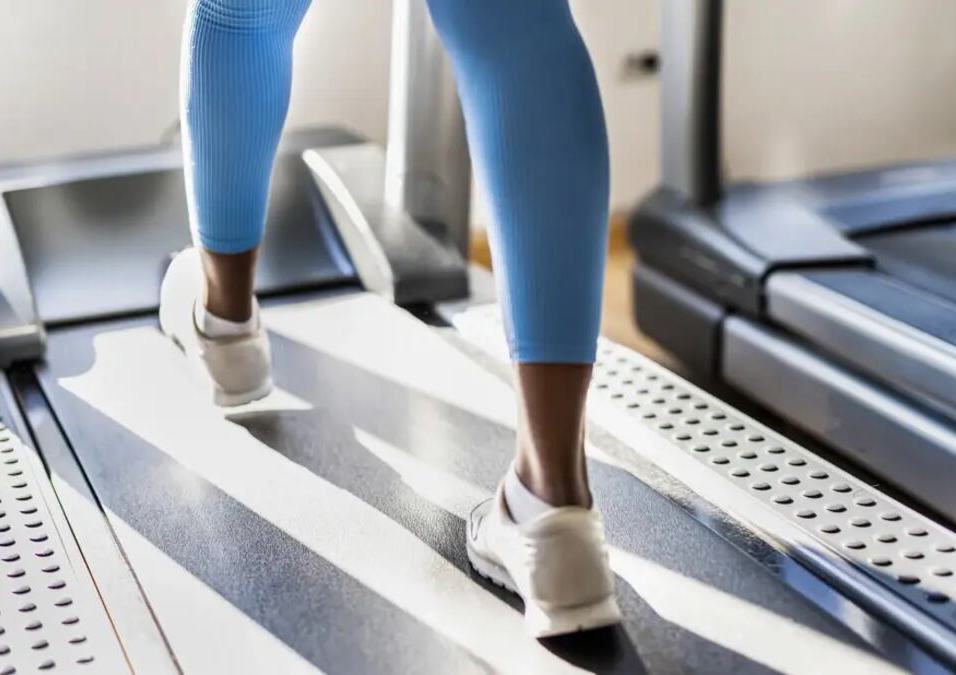Benefits of Walking Backward

SIGN UP FOR YOUR FREE DAY PASS TODAY!
Walking backward, also known as retro walking, is gaining traction on social media as a popular workout trend.
Advocates suggest it not only burns more calories but also boosts mental well-being. But is it truly beneficial?
Why Walk Backward?
Typically, walking from one place to another is a straightforward task, given our bodies are designed for forward motion. Yet, turning around and walking backward presents a challenge.
"Walking backward is less instinctive than walking forward, so it demands more physical effort and concentration," explains exercise physiologist Jordan Boreman, MS.
This additional effort can result in various benefits:
-
Engaging Different Muscles
Regular workouts often target the same muscle groups, which can lead to plateaus or injuries. Boreman suggests that varying exercises, like walking backward, is crucial.
Retro walking activates familiar muscles like the hamstrings, calves, and quadriceps differently and engages other muscles such as the gluteal muscles and hip flexors.
-
Increasing Calorie Burn
For those wanting a more intense workout, incorporating backward walking can be effective.
Boreman notes, "Backward walking involves different movements, elevating your heart rate and promoting higher calorie burn."
The American College of Sports Medicine (ACSM) rates moderate walking at 3.5 METs and backward walking at 6 METs, indicating greater energy expenditure for retro walking.
-
Reducing Joint Pain
Retro walking can benefit individuals with joint pain or arthritis due to its cross-training effect.
Boreman explains, "Using a toe-heel motion when walking backward engages the quadriceps, supporting the knees and enhancing hip flexor mobility."
However, consult a healthcare provider before starting if you have joint pain.
-
Exercising the Brain
Unlike routine forward walking, backward walking demands heightened concentration, engaging your senses and serving as a mental workout.
It's also a cardiovascular activity that can elevate mood and alleviate depression. "Any form of movement is beneficial for mental health," Boreman states.
-
Enhancing Posture
Everyday activities often result in poor posture, which can extend to walking. Regular backward walking encourages an upright stance, improving posture awareness.
Boreman mentions, "Backward walking forces you to remain upright, promoting better posture."
Safety Tips for Backward Walking
Retro walking is inherently riskier due to limited visibility. To minimize risks:
- Avoid Crowds - Steer clear of people to prevent collisions. Choose less crowded paths and keep music volume low to stay aware of your surroundings.
- Seek Smooth Surfaces - Avoid uneven terrain to prevent falls. Opt for smooth, paved paths or flat grass.
- Start Slowly - Gradually incorporate backward walking in short bursts, increasing duration as you adapt.
Backward Walking on a Treadmill
If you use a treadmill, try backward walking with caution. Boreman advises slowing the speed significantly to match your backward pace and using safety features like handrails and the safety key.
Duration of Backward Walking
Aim for sessions ranging from two to over thirty minutes based on your fitness level. Boreman suggests integrating short intervals of backward walking into your routine, building endurance over time.
This should complement your overall goal of 150 minutes of moderate exercise weekly, alongside strength training.
Join the Backward Walking Trend
While some fitness trends are fleeting, backward walking has proven its effectiveness.
Boreman reassures, "Backward walking is a valuable workout accessible to everyone, requiring no special equipment or gym access."
Don't shy away from quizzical looks from others—embrace the benefits and perhaps even inspire a neighborhood trend!
Source: health
The opinions shared in the GymNation blog articles are solely those of the respective authors and may not represent the perspectives of GymNation or any member of the GymNation team.
GET YOUR FREE TRIAL TODAY














































































